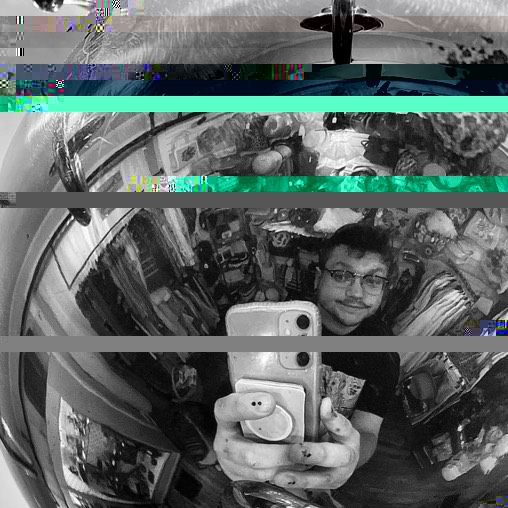Joseph H O'Connor
age ~68
from Braintree, MA
- Also known as:
-
- Joseph M O'Connor
- Joseph A O'Connor
- Joseph H Oconner
- Joseph Ho Connor
- Joe H O'Connor
- Joe A O'Connor
- Joseph Moconnor
- Mo Connor Joseph
- O'Connor Jos
- Phone and address:
-
35 Sheridan Rd, Braintree, MA 02184
781 843-2960
Joseph O'Connor Phones & Addresses
- 35 Sheridan Rd, Braintree, MA 02184 • 781 843-2960
- Quincy, MA
- Abington, MA
Wikipedia References

Joseph O'connor
About:
Died:
1941
Work:
Position:
Irish Republican Army member • Farmer • Captain • Senator
Education:
Specialty:
Leader
Skills & Activities:
Activity:
Cumann na nGaedheal politician
Medicine Doctors

Joseph S O'Connor
view sourceSpecialties:
Obstetrics & Gynecology
Gynecology
Gynecology

Joseph O'Connor
view sourceSpecialties:
Orthopedic Surgeon
Surgeon
Surgeon
Address:
100 East 77Th Street, New York, NY 10075
Name / Title
Company / Classification
Phones & Addresses
CEO
Integrated Healthcare Information Services
Other Individual & Family Svcs
Other Individual & Family Svcs
950 Winter St, Waltham, MA 02451
781 895-9950, 781 895-9951
781 895-9950, 781 895-9951
Director
Oakland Cemetery Lot Owners Assn of Dallas
Director
N-OF-ONE, INC
Health/Allied Services
Health/Allied Services
430 Bedford St STE 390, Lexington, MA 02420
405 Waltham St, Lexington, MA 02421
52 Round Hl Rd, Lincoln, MA 01773
405 Waltham St, Lexington, MA 02421
52 Round Hl Rd, Lincoln, MA 01773
Director
BOSTON FOREIGN COMMERCE CLUB INC
55 Auburn St, West Newton, MA 02465
378 Coronation Dr Franklin Ma 02038 Usa<Br/>378 Coronation Dr, Franklin, MA 02038
378 Coronation Dr Franklin Ma 02038 Usa<Br/>378 Coronation Dr, Franklin, MA 02038
Treasurer
M O'Connor Contracting Co Inc
General Contractor of New Single-Family & Multi-Family Homes & Commercial Buildings
General Contractor of New Single-Family & Multi-Family Homes & Commercial Buildings
19 Ledge Hl Rd, Boston, MA 02132
PO Box 320277, Boston, MA 02132
617 327-3070
PO Box 320277, Boston, MA 02132
617 327-3070
President
FITNESS TOGETHER PEABODY, INC
39 Cross St, Peabody, MA 01960
Peabody, MA 01960
Peabody, MA 01960
Chairman ,Director
PROFESSIONAL CHOICE HOME CARE AND MEDICAL SUPPLY CO
Treasurer
M O'Connor Contracting Inc
Trade Contractor
Trade Contractor
PO Box 320277, Boston, MA 02132
Us Patents
-
Method Of Fabricating A Belt And A Belt Used To Make Bulk Tissue And Towel, And Nonwoven Articles And Fabrics
view source -
US Patent:7005044, Feb 28, 2006
-
Filed:Dec 31, 2002
-
Appl. No.:10/334211
-
Inventors:Charles E. Kramer - Walpole MA, US
Joseph G. O'Connor - Hopedale MA, US
John Skelton - Sharon MA, US
Maurice Paquin - Plainville MA, US -
Assignee:Albany International Corp. - Albany NY
-
International Classification:D21F 1/10
B05D 1/12
B05D 5/00 -
US Classification:162362, 162116, 162348, 162361, 162903, 4281951, 428147, 442 76, 427195, 427244, 427261, 427288, 4273899
-
Abstract:In a method for manufacturing a belt and a belt for use in the production of bulk tissue and towel, and of nonwoven articles and fabrics, a polymeric resin material is applied onto the surface of a base substrate in a precise predetermined pattern which is to be imparted onto products manufactured with the belt. The polymeric resin material is deposited in droplets having an average diameter of 10μ (10 microns) or more. The polymeric resin material is then set by means appropriate to its composition, and, optionally, may be abraded to provide the belt with a uniform thickness, and a smooth, macroscopically monoplanar surface.
-
Method Of Fabricating A Belt And A Belt Used To Make Bulk Tissue And Towel, And Nonwoven Articles And Fabrics
view source -
US Patent:7014735, Mar 21, 2006
-
Filed:Dec 31, 2002
-
Appl. No.:10/334512
-
Inventors:Charles E. Kramer - Walpole MA, US
Joseph G. O'Connor - Hopedale MA, US
Maurice Paquin - Plainville MA, US -
Assignee:Albany International Corp. - Albany NY
-
International Classification:D21F 1/10
B05D 1/12
B05D 5/00 -
US Classification:162362, 162116, 162348, 162361, 162903, 4283084, 4283142, 4281951, 442 76, 427195, 427244, 427261, 427265, 427288, 4273899
-
Abstract:A method for manufacturing a belt and a belt for use in the production of bulk tissue and towel, and of nonwoven articles and fabrics, requires the application of a sacrificial material onto a base substrate in a predetermined pattern which is to be imparted onto products manufactured with the belt. The sacrificial material is deposited in droplets in a controlled manner so as to control the x, y, z dimension of the material deposited and preferably has having an average diameter of 10μ (10 microns) or more. A polymeric resin material is then deposited on the base substrate in all areas except those on which the sacrificial material has previously been applied. The polymeric resin material is then set by means appropriate to its composition, and the sacrificial material removed. Optionally, the polymeric resin material may then be abraded to provide the belt with a uniform thickness, and a smooth, macroscopically monoplanar surface.
-
Method For Manufacturing Resin-Impregnated Endless Belt Structures For Papermaking Machines And Similar Industrial Applications And Belt
view source -
US Patent:7166196, Jan 23, 2007
-
Filed:Dec 31, 2002
-
Appl. No.:10/334192
-
Inventors:Charles E. Kramer - Walpole MA, US
Joseph G. O'Connor - Hopedale MA, US
Maurice Paquin - Plainville MA, US
John Skelton - Sharon MA, US -
Assignee:Albany International Corp. - Albany NY
-
International Classification:D21F 3/02
B05D 5/00
B05D 1/00
B32B 27/04 -
US Classification:1623584, 162901, 4281951, 428196, 442 59, 427195, 427261, 427288, 4273899
-
Abstract:A method for manufacturing resin-impregnated endless belt structure and belt structure, designed for use on a long nip press on a papermaking machine and for other papermaking and paperprocessing applications, requires the application of a polymeric resin material onto a base substrate in a precise predetermined pattern in droplets having an average diameter of 10μ (10 microns) or more. The polymeric resin material is then set by means appropriate to its composition, and, optionally, may be abraded to provide the belt with a uniform thickness, and a smooth, macroscopically monoplanar surface.
-
Method For Manufacturing Resin-Impregnated Endless Belt And A Belt For Papermaking Machines And Similar Industrial Applications
view source -
US Patent:7169265, Jan 30, 2007
-
Filed:Dec 31, 2002
-
Appl. No.:10/334210
-
Inventors:Charles E. Kramer - Walpole MA, US
Joseph G. O'Connor - Hopedale MA, US
Maurice Paquin - Plainville MA, US -
Assignee:Albany International Corp. - Albany NY
-
International Classification:D21F 3/02
B05D 5/00
B05D 1/00
B32B 27/04 -
US Classification:1623584, 162901, 4281951, 428196, 4283084, 4283142, 442 59, 427195, 427261, 427288, 4273899
-
Abstract:A method for manufacturing resin-impregnated endless belt structures and belt structures designed for use on a long nip press on a papermaking machine and for other papermaking and paper processing applications, requires the application of a sacrificial material onto a base substrate in a predetermined pattern in droplets having an average diameter of 10μ (10 microns) or more. Polymeric resin material is then deposited on the base substrate to cover all areas except those on which the sacrificial material has been previously applied. The polymeric resin material is then set by means appropriate to its composition, and the sacrificial material removed. Optionally, the polymeric resin material may then be abraded to provide the belt with a uniform thickness, and a smooth, macroscopically monoplanar surface.
-
Conductive Monofilament And Fabric
view source -
US Patent:20080318483, Dec 25, 2008
-
Filed:Jun 3, 2008
-
Appl. No.:12/132092
-
Inventors:Joseph Salitsky - Mansfield MA, US
Joseph G. O'Connor - Hopedale MA, US
Maurice R. Paquin - Plainville MA, US
Jonathan S. Barish - South Easton MA, US -
International Classification:B32B 15/02
D03D 15/00
D04B 1/16 -
US Classification:442 6, 442229, 442195, 442192, 442316, 428389
-
Abstract:A conductive monofilament and static dissipative fabric having the same wherein the monofilament includes electrically conductive material and binder and has static dissipation properties.
-
System And Method For De-Risking A Pension Fund
view source -
US Patent:20140236863, Aug 21, 2014
-
Filed:Apr 23, 2014
-
Appl. No.:14/259453
-
Inventors:- Boston MA, US
Konstantin Danilov - Jouy-en-Josas, FR
Joseph O'CONNOR - Quincy MA, US
Paul Partridge - New Hamburg, CA
Alasdair Rew - Toronto, CA
Nadia Savva - Mississauga, CA
Steve Orlich - Toronto, CA
Steve Medina - Des Moines IA, US
Bob Boyda - Sherborn MA, US
Irina Muhina - Toronto, CA
Neal Toomey - Boston MA, US -
Assignee:MANULIFE ASSET MANAGEMENT (US) LLC - Boston MA
-
International Classification:G06Q 40/06
-
US Classification:705 36 R
-
Abstract:A system for de-risking a pension fund, the system including: an input module for receiving asset class forecasts; a modeling module for modeling a plurality of portfolios based on the asset class forecasts to provide a de-risking framework; an asset mix module for receiving an asset mix for each of the model portfolios based on the de-risking framework; a database for storing data related to the asset class forecasts, the model portfolios, and asset mix; a processor configured to monitor the model portfolios for performance within the de-risking framework by: calculating an indicator of funded status volatility; comparing the indicator with a benchmark; and reporting the result. In particular, the indicator of funded status volatility is a liability tracking error and the benchmark is the liability tracking error of a conventional or standard pension portfolio.
-
System And Method For De-Risking A Pension Fund
view source -
US Patent:20140136444, May 15, 2014
-
Filed:Nov 9, 2012
-
Appl. No.:13/672997
-
Inventors:- Boston MA, US
Konstantin DANILOV - Jouy-en-Josas, FR
Joseph O'CONNOR - Quincy MA, US
Paul PARTRIDGE - New Hamburg, CA
Alasdair REW - Toronto, CA
Nadia SAVVA - Mississauga, CA
Steve ORLICH - Toronto, CA
Steve MEDINA - Des Moines IA, US
Bob BOYDA - Sherborn MA, US
Irina MUHINA - Toronto, CA
Neal TOOMEY - Boston MA, US -
Assignee:MANULIFE ASSET MANAGEMENT (US) LLC - Boston MA
-
International Classification:G06Q 40/06
-
US Classification:705 36 R
-
Abstract:A system for de-risking a pension fund, the system including: an input module for receiving asset class forecasts; a modeling module for modeling a plurality of portfolios based on the asset class forecasts to provide a de-risking framework; an asset mix module for receiving an asset mix for each of the model portfolios based on the de-risking framework; a database for storing data related to the asset class forecasts, the model portfolios, and asset mix; a processor configured to monitor the model portfolios for performance within the de-risking framework by: calculating an indicator of funded status volatility; comparing the indicator with a benchmark; and reporting the result. In particular, the indicator of funded status volatility is a liability tracking error and the benchmark is the liability tracking error of a conventional or standard pension portfolio.
Lawyers & Attorneys

Joseph O'Connor - Lawyer
view sourceOffice:
Joseph J. O'Connor, Esq.
Specialties:
Residential Real Estate
Trusts & Estates
Wills
Real Property
Business Incorporations
Business Closings
Trusts & Estates
Wills
Real Property
Business Incorporations
Business Closings
ISLN:
904736999
Admitted:
1972
University:
St. Francis College, B.A., 1964
Law School:
St. John's University, J.D., 1971

Joseph O'Connor - Lawyer
view sourceOffice:
Bartlett LLP
ISLN:
910096933
Admitted:
1996
University:
Cornell University, B.A., 1988
Law School:
St. John's University School of Law, J.D., 1995

Joseph O'Connor - Lawyer
view sourceOffice:
O'Connor, Joseph E.
Specialties:
General Practice
ISLN:
904737026
Admitted:
1963
University:
San Diego State University, B.S., 1955
Law School:
University of San Diego, LL.B., 1962
Real Estate Brokers

Joseph O'connor, Boston MA
view sourceSpecialties:
Buyer's Agent
Listing Agent
Listing Agent
Work:
Summit Realty Group LLC
130 Bowdoin Street, Boston, MA 02108
617 419-5260 (Office)
130 Bowdoin Street, Boston, MA 02108
617 419-5260 (Office)
Youtube
Googleplus

Joseph O'connor
Work:
Antique Kids Photography - Printer/Editor (2010-2010)
Education:
Sinclair Community College - Visual Communcations, Kettering Fairmont

Joseph O'connor
Work:
Miller Mortgage
Millagio - Dealer
Millagio - Host
Millagio - Dealer
Millagio - Host

Joseph O'connor
Education:
New Brunswick Community College - Electronic Game Design (Programming)

Joseph O'connor
Work:
Home

Joseph O'connor

Joseph O'connor

Joseph O'connor

Joseph O'connor
Flickr
Get Report for Joseph H O'Connor from Braintree, MA, age ~68













